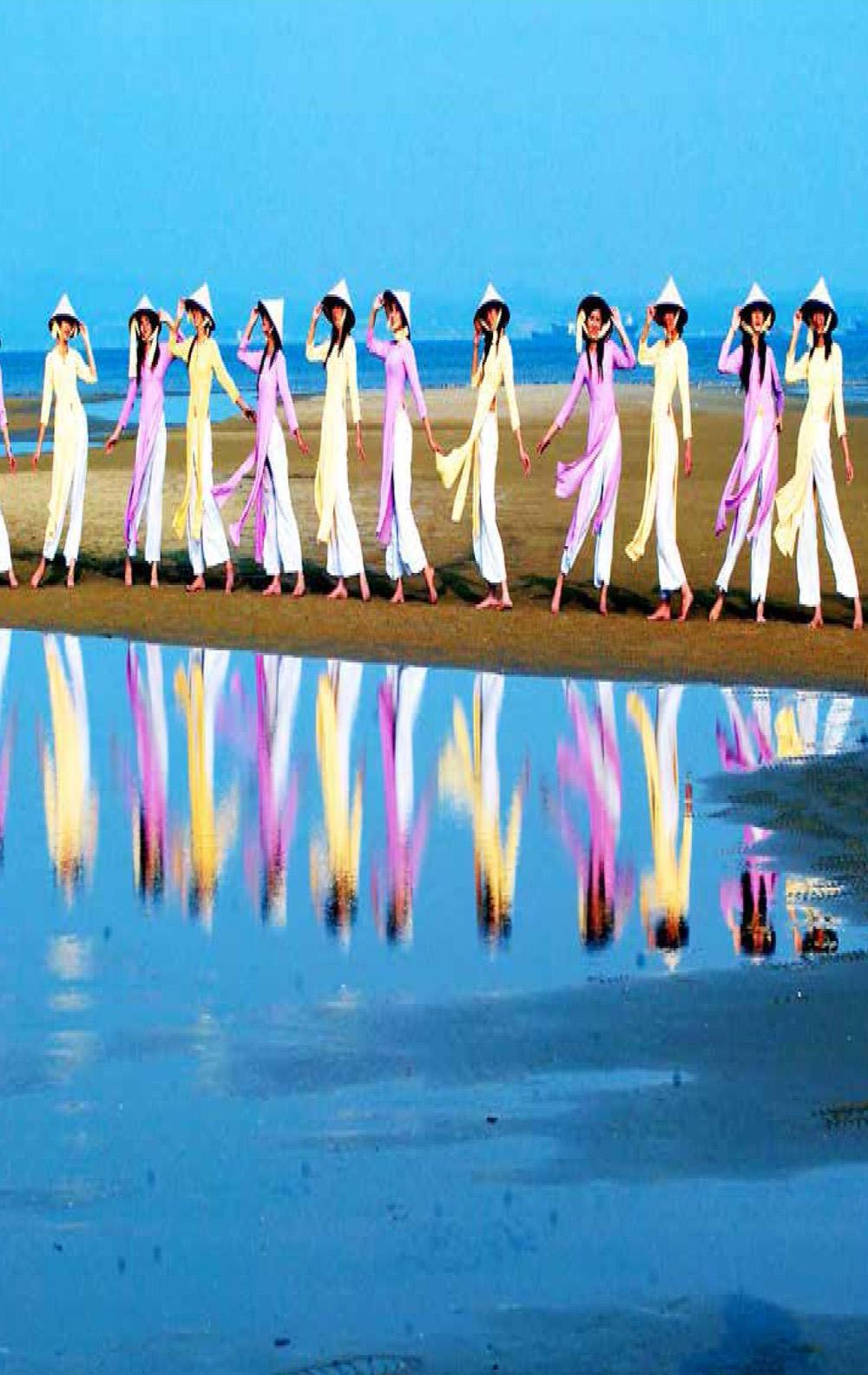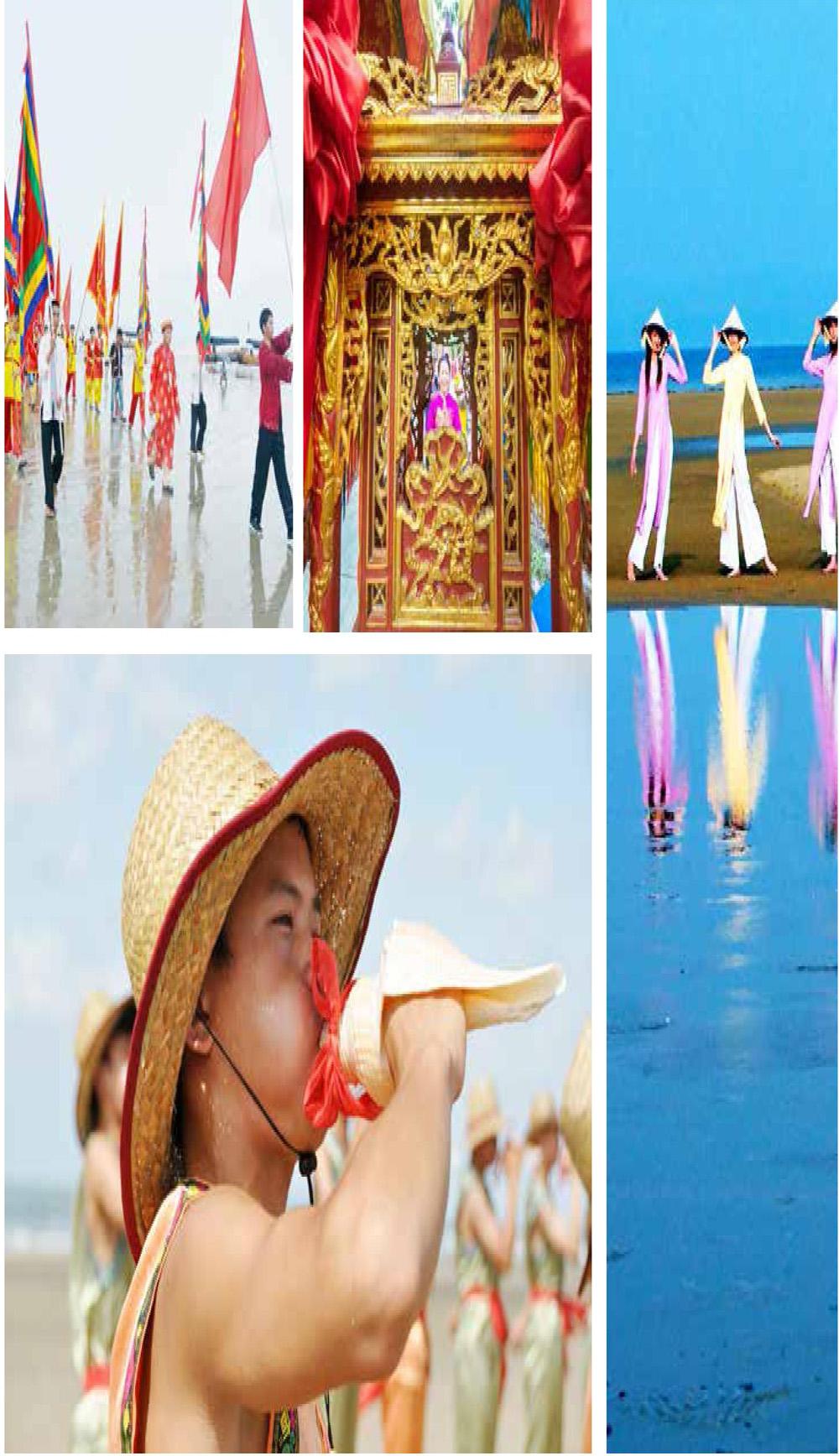Dongxing, a Border City Interlacing With Jing Ethnic Culture
Chen Zhiying



Maybe many people havent heard of Dongxing, but Vietnam must be familiar to all of you. Dongxing is a coastal city bordering Vietnam with Mong Cai lying on the other side of the border river. Many people come to this city just to pass through it and then go to Vietnam. They are happy in steps, with eyes only focusing on the “exit and entry hall”, but ignore Dongxings uniqueness. It is a melting pot of different cultures. Travelers can experience and enjoy the special culture and customs of Jing ethnic minority here.
Living off the sea
The Jing ethnic minority mainly inhabits the “three islands”, namely Wanwei, Wutou and Shanxin, located in a subordinating city of Fangchneggang — Dongxing. According to historical records, about 500 years ago, the ancestors of Jing people from Tushan, Vietnam went to the “three islands”. Because of the beautiful scenery and rich products in the nearby waters, they settled here. Therefore, Jing ethnic minority has some relations with Vietnam to some degree, forming its own distinctive features. Among Chinas ethnic minority groups, Jing is the only one that lives on the sea. As an old saying goes, those living on a mountain live off the mountain. Since Jing people live along the coast, thus sea products have naturally become their source of income and daily food. They like to eat fish, shrimps, crabs, etc. and develop a unique condiment called fish sauce, a typical Jing condiment made from different kinds of small fishes pickled into a soluble form.
To make it Jing people first fill up some straws and sand bags on the bottom of a large tile jar to be the filtering layer. Then cut a hole on the bottom of the jar and put a bamboo tube or rubber tube to be the sauce pipe. After that, put in salt and small clean fish layer by layer. Finally, cover the jar and seal it. Five to seven days later, pull out the stopper of the pipe, from which the sauce flows out continually. The sauce that comes out at first is called “initial leaking sauce” which is very fragrant and with golden color. It is the most superior type of fish sauce, commonly using for receiving guests. After a while, adding boiled salt water into the jar, people can continue to press and strain the sauce. This produces the “second-time leaking sauce”, whose color, fragrance and taste are slightly inferior, but still good enough to be widely consumed and exported to other countries. The “third-time leaking sauce”, a third-class product which is seldom sold in markets is used at home. Generally, it is made in the fishing season from the third month to the sixth month of the lunar calendar. The self-made fish sauce not only contains 8 kinds of essential nutrients for human body, but also is complete in color, fragrance and taste. No wonder there is a saying that goes like this, “thousands of sauces are not so good as Jing people's fish sauce”.
Performing the melody of the sea
As the descendants of the sea, Jing people breed many unique national cultures on the seashore. The single-stringed instrument is an excellent example. It is an ancient musical instrument made by the ancestors of Jing people in their long-term lives at sea, inspired by the sound of ropes knocking spars along with oars and boats swaying in the sea. And legend has it that this kind of instrument was evolved from the musical instrument of the god of the sea, the string on which was the hair of the sea gods seventh daughter. Historical records of the single-stringed instrument can be traced back to the Yin Dynasty (1600 BC-1046 BC), showing that it has a deep historical and cultural origin. Composed of three major parts, the single-stringed instrument is shaped like a rectangular box. As its name implies, the instrument only has one string. The performer holds the fiddle in their left hand and plucks the string with a tiny piece of bamboo in their right hand. The sound is soft, charming and emotional, resonating a profound feeling from the bottom of the heart, particularly among those living far from the motherland. With one fiddle and one string, the single-stringed instrument is simple and quaint in appearance, but soft and beautiful in tone which is very expressive: It can not only depict the natural scene delicately, but also show peoples thoughts, feelings and inner world incisively and vividly. Viewing fingers plucking the string and hearing the melodious sound, you will naturally sink into different musical atmospheres.
It is an indispensable part for the life of Jing people who largely live in coastal areas and earn a living by fishing. They often play the single-stringed instrument and sing during their spare time after returning from the sea or during the traditional folk festival. Since 2010, the single-stringed instrument has been recognized by the Chinese government as an intangible cultural heritage. The recognition helps to preserve its age-old value, assist the music of Jing ethnic minority to integrate into the worlds contemporary music and enrich the diversity of the worlds collection of musical instruments.
Praying for the blessing of the sea
Jing people regard the sea as their parents, on whom their livelihood depends. Therefore, the gods originally believed by them are closely related to the sea, thus forming a series of rituals of worshiping. Jing people celebrate Ha Festival to commemorate the god of the sea and pray for a bumper grain harvest. There are many folklores about Ha Festival. At present, the legend widely spread in the three islands of Jing ethnic minority is like this: Many years ago, there was a big centipede who like to take people as its food. Having known that, a deity decided to kill the centipede. He got on a boat and successfully threw a hot pot with boiling pumpkins to the centipedes mouth. The centipede rolled in the sea and after a while, dragging his exhausted body, drifted towards the shore. Seeing this, the old deity cut it into four parts. Subsequently, people found that half of the head, body and tail of the centipede were drifted to three isolated islands. People called the three islands Wutou, Shanxin and Wanwei respectively. Since then, the nearby residents can live and work in peace. Therefore, Jing people regard the deity as the god of the sea and set up a temple to worship him. Every year, they go to the seaside and offer sacrifices to the god of the sea, thus becoming the annual Ha Festival.
“Ha” means “singing” in Jing dialect, thus Ha Festival is also a song festival. The specific date of Ha Festival varies from place to place. Although the dates are different, the forms and contents of the festival are basically the same. The festival usually lasts for three days. People of all ethnic groups around come to Ha pavilion, singing and dancing all night long. During the festival, the Ha pavilion is ablaze with lights. Inside, there are “Ha girls” who put Jing lanterns on the head, paint faces, hold purple wax in hands, wave sticks, sing and dance as well as play flutes.
Containing rich ethnic cultural contents, Ha Festival is the most solemn and meaningful festival of Jing ethnic minority, on which all villagers, no matter men or women, the young or the old, will dress in costumes to celebrate. Women usually wear a tight-fitting long silk dress with long sleeves that is worn over long pants, which gives them a simple yet flattering profile while still showing the curves of their bodies. And men will wear long jackets reaching down to the knees and girdles. The colorful ethnic costumes, singing and dancing interlacing together present us with a lively Ha Festival.
Dongxing, habitat of Jing ethnic minority and a small border city, is tranquil and peaceful, showing its unique culture to people who come here.

